 On Wednesday the U.S. Food and Drug Administration quietly updated its list of mobile medical applications that it would not regulate. It added a description of an app that fairly well describes Apple's recently announced Health app. The addition comes just a day after the FDA responded to a three-month old Freedom of Information Act request from a tech publication about its meeting with Apple last year and revealed a summary of their discussion.
On Wednesday the U.S. Food and Drug Administration quietly updated its list of mobile medical applications that it would not regulate. It added a description of an app that fairly well describes Apple's recently announced Health app. The addition comes just a day after the FDA responded to a three-month old Freedom of Information Act request from a tech publication about its meeting with Apple last year and revealed a summary of their discussion.
Here's the app that the FDA added to its list of those that might meet the legal definition of a medical device, but that it would choose to exercise regulatory discretion over: "Mobile apps that allows a user to collect, log, track and trend data such as blood glucose, blood pressure, heart rate, weight or other data from a device to eventually share with a heath care provider, or upload it to an online (cloud) database, personal or electronic health record. [Added June 11, 2014]."
Apple's HealthKit and Health app followed a somewhat similar unveiling by Samsung a few weeks ago for its SAMI fitness data tracking platform. Just last night Forbes reported that it learned from an anonymous source that Google has designs on launching its own fitness tracking platform, called Google Fit -- not to be confused with the company's shuttered personal health record platform Google Health.
The health and fitness tracking platform race appears to be on, and of the three big technology companies that have stepped on the field, Apple has shared the most about its platform so far. In the pages to follow, MobiHealthNews has outlined what kinds of health and fitness data Apple's Health app aggregates. Keep in mind this is an app that is a part of a beta iOS8, so it is likely that Apple will improve the app's capabilities before it's real launch later this fall. Apple missed at least a couple of important data fields that will disappoint some users and will leave out a considerable number of digital health companies' data sets.
Read on for MobiHealthNews' breakdown of Apple's Health app.
Diagnostics: Diagnostics measured on the Health app so far include number of times fallen, galvanic skin response, and body heat flux.
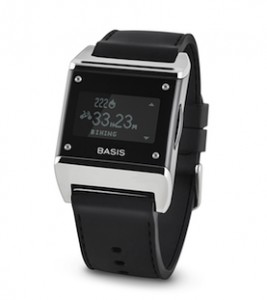 Galvanic skin response is a method of measuring the electrical conductance of the skin through sweat, which can indicate a change in someone's psychological or physical state. Galvanic, a Dublin-based startup, tracks this metric exclusively. Its device, a Bluetooth-enabled galvanic skin response sensor, is also a game controller. The product, called the PIP sensor, is designed to help users learn to reduce their own stress through gamified biofeedback. The company completed a successful Kickstarter campaign in July 2013. The product has yet to launch, but is available for preorder on the company's website. Basis Band, which was acquired by Intel in March, also tracks galvanic skin response, along with other metrics including blood flow, activity, and ambient temperature of the skin.
Galvanic skin response is a method of measuring the electrical conductance of the skin through sweat, which can indicate a change in someone's psychological or physical state. Galvanic, a Dublin-based startup, tracks this metric exclusively. Its device, a Bluetooth-enabled galvanic skin response sensor, is also a game controller. The product, called the PIP sensor, is designed to help users learn to reduce their own stress through gamified biofeedback. The company completed a successful Kickstarter campaign in July 2013. The product has yet to launch, but is available for preorder on the company's website. Basis Band, which was acquired by Intel in March, also tracks galvanic skin response, along with other metrics including blood flow, activity, and ambient temperature of the skin.
Apple has had body heat flux tracking on the mind since at least 2010. Body heat flux, like galvanic skin response, measures activity through heat change. In 2010, MobiHealthNews rounded up a few patent applications that Apple submitted. One of the applications, for earbuds tracking biometrics includes heat flux as a potential metric. The patent has not been granted, and since then Apple submitted another patent for health sensing earbuds. While the second patent was granted, it did not include heat flux as a metric. Jawbone-owned BodyMedia, on the other hand, has an FDA-cleared armband available that does offer heat flux tracking.
The final category in this section, number of times fallen, is a key one for the aging population whose risk of falling is much higher.
Many startups have launched mobile personal response systems (mPERS) and smartphone apps so that an elderly person can alert loved ones and care providers if they fell down and need help. Some of these include GreatCall's Splash, a one-button mobile personal emergency response system powered by GreatCall’s 5Star mPERS offering, Philips Lifeline's HomeSafe, a help button worn as a pendant, and Amulyte's senior monitoring system, an on-the-go device connected to a companion app.
Other companies are trying different approaches. In November 2013, The University of California at Los Angeles Wireless Health Institute teamed up with smart cane startup Isowalk to create a sensor-laden cane that could be used to predict falls or help speed up recovery for injured athletes. Last January, an Israeli company crowdfunded a “smart shoe”, the B-shoe. This shoe has a motor in it that will roll an elderly person’s foot backward to catch them if they start to fall. Finally, at a recent AARP Life@50+ event, a startup named Sway Medical announced its cost effective offering for fall-risk assessment. The balance screening tool they offer is available as an app for smartphones and has been clinically validated and FDA cleared. The test is also reimbursable so patients would have to pay just $32 per test.
Fitness: In its Fitness category, Health has a long list of metrics, some of which are a little inscrutable. Given Apple's 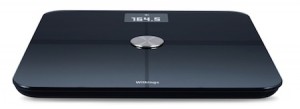 these could be mistakes in the beta. Or they could be new metrics Apple plans to track.
these could be mistakes in the beta. Or they could be new metrics Apple plans to track.
Apple's metrics in the fitness category fall broadly into two categories: weight-related metrics that would be measured by a smart scale of some kind, and activity metrics, measured either through the phone's built-in accelerometer or via one of the many fitness wearables on the market.
On the scale side, interestingly, the fitness section includes a module for height, but not weight. Height is an odd metric to track since only children, teens, and the very old will see that metric change over time. But it might be included because it's part of the formula for calculating body mass index (BMI) along with weight. Weight itself is not included on the list, but body mass is. The only difference between weight and mass is that weight accounts for gravity, so unless Apple is trying to make the app more consistent and accurate for astronauts, it's an odd choice of wording, too.
Weight and BMI could be imported from a number of smart scales on the market, the most prominent of which are the Fitbit Aria, the Withings Smart Body Analyzer and Withings Wireless Scale, and the iHealth Wireless Scale. Additionally, Apple gives options for tracking body fat percentage and lean body mass, two tracking metrics offered by all of the previously listed scales except for the stripped-down Withings Wireless Scale.
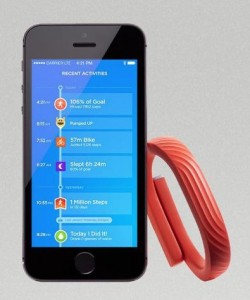 The activity metrics are also interesting. Of course, Apple includes the big three: steps taken, calories burned, and distance traveled. These metrics could be imported from any one of the major fitness trackers: the three Fitbit devices, Withings Pulse, iHealth's Wireless Activity and Sleep Tracker, the (possibly soon-to-be-discontinued) Nike+ Fuelband and Fuelband SE, the Jawbone UP and UP24, the Misfit Shine, or the Basis Band, as well as less expensive devices like the Fitbug or the Fitlinxx Pebble. They could also be tracked with the phone's built-in accelerometer and imported via an app like ProtoGeo's Moves, RunKeeper, MyFitnessPal, MapMyFitness, Endomondo or Azumio's Argus. The new LifeBand from LG tracks all these metrics, as does Sony's new SmartBand, but the latter isn't likely to integrate with Health: the wearable is Android-only.
The activity metrics are also interesting. Of course, Apple includes the big three: steps taken, calories burned, and distance traveled. These metrics could be imported from any one of the major fitness trackers: the three Fitbit devices, Withings Pulse, iHealth's Wireless Activity and Sleep Tracker, the (possibly soon-to-be-discontinued) Nike+ Fuelband and Fuelband SE, the Jawbone UP and UP24, the Misfit Shine, or the Basis Band, as well as less expensive devices like the Fitbug or the Fitlinxx Pebble. They could also be tracked with the phone's built-in accelerometer and imported via an app like ProtoGeo's Moves, RunKeeper, MyFitnessPal, MapMyFitness, Endomondo or Azumio's Argus. The new LifeBand from LG tracks all these metrics, as does Sony's new SmartBand, but the latter isn't likely to integrate with Health: the wearable is Android-only.
The next step up from those three standard tracking metrics is "flights climbed" a measure for stairs (and possibly other altitude changes like slopes). Of the major trackers, only a few are equipped with an altimeter to actually track steps right now. The Fitbit One does it (as did the now-recalled Fitbit Force), and so do Withings Pulse and the new LG LifeBand. Endomondo and Moves claim to track stair climbing as well.
Beyond that, there's a metric called "Activity Count" which could refer to a number of possible things including active minutes or a number of activities completed toward a pre-set goal. Without knowing the meaning of that metric, it's hard to say exactly which devices Health could import tracking information from.
That leaves just two more fitness metrics in Apple's slate. One, basal calories, is a measure of the calories your body burns at rest, without moving at all. It's hard to actually track basal calories, but they can be calculated based on weight, height, age, and sex, and they can be used to more accurately estimate how many calories your body is burning during exercise. Currently, only a few apps, including Argus and MyFitnessPal, track basal calories.
Finally, Apple included a tracking module for Nike+ Fuel points, the measure of activity that RunKeeper CEO Jason Jacobs once described as "a Nike-branded calorie." Although Nike made efforts when it launched its accelerator to get other developers starting to think about Fuel, the only devices that really track it right now are from Nike: The FuelBand and FuelBand SE, the Nike+ Move App, the Nike+ SportWatch GPS, the Nike+ Running App, and Nike+ Kinect Training, a video game on the Xbox.
Lab results: The lab results tab in the Health app includes blood glucose, blood alcohol content, and perfusion index.
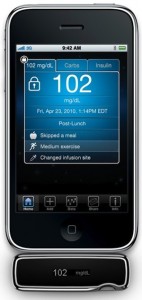 Several devices offer connected apps that record blood glucose, which is used by people with diabetes to adjust their diet and to determine how much insulin they need to give themselves. At the end of 2011, Sanofi announced that the iBGStar, the company's smartphone-enabled blood glucose monitor, was the first to receive an 510(k) clearance from the FDA. Just six months later, Apple announced that people could buy the iBGStar in its stores. LabStyle, a connected glucometer company based in Israel has been taking steps to launch its product Dario in the US. In December 2013, the company said it had filed for FDA 510(k). Another company, Glooko, helps people with diabetes connect their glucometers to their smartphones with a cable. While Glooko could potentially connect devices to Health, the company has a relationship with Samsung, which might affect Apple's willingness to integrate with Glooko.
Several devices offer connected apps that record blood glucose, which is used by people with diabetes to adjust their diet and to determine how much insulin they need to give themselves. At the end of 2011, Sanofi announced that the iBGStar, the company's smartphone-enabled blood glucose monitor, was the first to receive an 510(k) clearance from the FDA. Just six months later, Apple announced that people could buy the iBGStar in its stores. LabStyle, a connected glucometer company based in Israel has been taking steps to launch its product Dario in the US. In December 2013, the company said it had filed for FDA 510(k). Another company, Glooko, helps people with diabetes connect their glucometers to their smartphones with a cable. While Glooko could potentially connect devices to Health, the company has a relationship with Samsung, which might affect Apple's willingness to integrate with Glooko.
Quite a few startups have also tackled blood alcohol content tracking, which helps people understand how much they've had to drink. The most high profile company, in part because of its screen time on ABC show Shark Tank, is Breathometer, a peripheral device that connects to a smartphone t0 display the user's blood alcohol content data. The company’s pitch on the show resulted in an unprecedented $1 million investment from all five investors. Since then, Breathometer topped $1 million in sales. MobiHealthNews has previously rounded up six companies in this space including an iPod-connected breathalyzer that was available as early as 2009.
Perfusion index is a measure of arterial pulse strength. At least one company, Masimo, currently has a product on the market that offers perfusion index tracking. Masimo's commercially-available iOS-enabled pulse oximeter, called the iSpO2, tracks blood oxygenation but also tracks the perfusion index using the same pulse oximetry technology as Masimo’s medical products. Masimo c-level executive Michael O'Reilly also left the company to join Apple as its head of medical products.
Medications: We anticipated that the medications section would be similar to a medication reminder app, offering users a list of all medications that they  are currently taking, reminders for refills, and alerts if there's a possibility users will be taking medications that might react differently when taken together. That's still a possible future for the app, and even a likely one. For now, though, the medications section sports a single tab: "Inhaler Usage."
are currently taking, reminders for refills, and alerts if there's a possibility users will be taking medications that might react differently when taken together. That's still a possible future for the app, and even a likely one. For now, though, the medications section sports a single tab: "Inhaler Usage."
Both Gecko Cap and Propeller Health have developed sensors that connect to asthma or COPD rescue inhalers and collect data when the inhaler is used. In addition, pharmaceutical company Opko Health recently acquired an Israeli smart inhaler company, Inspiro Medical, and will begin to offer its inhaler bundled with particular Opko drugs. Any of those sensors could potentially integrate with the Health app down the line.
Outside of inhalers, there are a lot of medication adherence apps and connected smart pill bottles or boxes that could be integrated with the app, including Johnson & Johnson's Care4Today app, Mango Health, GlowCaps, and AdhereTech. While the Health App isn't well-equipped for issuing reminders, it could integrate data from an adherence app to help the user keep track of medications taken and doses missed.
Nutrition: The Health app's nutrition section can keep track of total fat, polyunsaturated fat, monounsaturated fat, saturated fat, cholesterol, sodium, carbohydrates, fiber, sugar, calories, protein, vitamin (A, B6, B12, C, D, E, K), and calcium. There are countless nutrition tracking apps and devices available to users. This year, MobiHealthNews made a list of 27 nutrition tracking tools that have either been around, been discontinued, or are coming soon. Many of these tools require users to manually enter their meals and snacks into an app, and the app will act as a food diary that can provide users with graphs and other views of their data. A few examples of this type of tracking include MyFitnessPal, which recently acquired fitness coaching startup Sessions, and FatSecret, which partnered with glucose tracker company LabStyle.
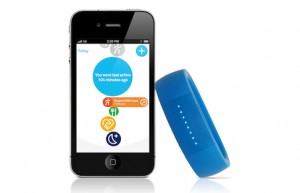 Lark Life
Lark Life
Other companies have tried another food tracking route, for example tracking nutrition through pictures the user takes of meals. One company in this space, Rise Labs, not only asks people to take pictures of their food, but also offers personal coaching including daily feedback and tips to stay healthy. Another alternative method of food tracking, which is arguably similar to manual entry, is using a weight scale to weigh meals, so that users can get a more exact nutrition count. Former Apple employee Michael Grothaus launched a Kickstarter campaign for a smart food scale, called Situ. Users place their food on the scale, and then enter the name of the food into the companion app. The app then displays the food’s weight as well as other nutritional information like total fat, cholesterol, protein, total carbs, and sodium.
Sleep: Apple also includes a section for sleep, something else increasingly included in consumer fitness trackers on the market. The sleep section in the Health app has only one metric under it, "Sleep Analysis." But this could potentially be a placeholder for any number of sleep-related metrics. For instance, Basis Band's new advanced sleep analytics track REM sleep, deep sleep, light sleep, toss-and-turn, interruptions and duration.
In addition to Basis, sleep is currently tracked by Fitbit Flex, Fitbit One, Withings Pulse, Jawbone UP and UP24, and dedicated sleep tracker Lark, although the Lark wearable may not be available for purchase anymore. Recent devices in the sleep space have not been wearable, but have been attached to the bed or set down next to it, but these devices could also conceivably integrate with Health.
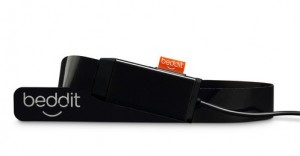 Beddit, a company tracking sleep with sensors that strap to the user’s bed, had a successful Indiegogo campaign and began selling its product in December. Another company, IntelliClinic, raised $400,000 for a smart sleep mask called NeuroOn, meant to measure and improve the user’s sleep. In January, SleepRate launched an app-based sleep system using cognitive behavioral strategies licensed from Stanford University’s School of Medicine, Psychiatry, and Behavioral Sciences. Sleep tracker maker Bam Labs teamed up with smart bed maker Sleep Number to create an $8,000 bed with a tablet interface. Finally, at CES this year, Withings announced a whole new multi-device system, called Aura, for tracking sleep and facilitating sleep behavior change.
Beddit, a company tracking sleep with sensors that strap to the user’s bed, had a successful Indiegogo campaign and began selling its product in December. Another company, IntelliClinic, raised $400,000 for a smart sleep mask called NeuroOn, meant to measure and improve the user’s sleep. In January, SleepRate launched an app-based sleep system using cognitive behavioral strategies licensed from Stanford University’s School of Medicine, Psychiatry, and Behavioral Sciences. Sleep tracker maker Bam Labs teamed up with smart bed maker Sleep Number to create an $8,000 bed with a tablet interface. Finally, at CES this year, Withings announced a whole new multi-device system, called Aura, for tracking sleep and facilitating sleep behavior change.
Vital signs: Vital signs that the app tracks include heart rate, oxygen saturation, blood pressure, respiratory rate, body temperature, and RR interval. The RR interval measures the interval between heart beats.
Devices track heart rate for several non-medical purposes: sports training, fitness metrics, stress, and sleep analysis.
Recently, Samsung added a built-in optical heart rate sensor to its newest smartphone, the Samsung Galaxy S5. The Galaxy S5′s heart rate sensor requires the user to put their fingertip on the back of the phone in order to take a reading. A few months later, Samsung updated the S5's software so that now users can track their stress levels using the heart rate sensor. One company, Azumio, has been using the smartphone to track heart rate for a while. Its app, Instant Heart Rate, tracks heart rate by leveraging a smartphone camera, which tracks color changes in the light that passes through the user's finger.
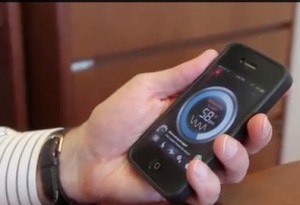 Both of these apps require users to be standing still when they are recording heart rate measurements. On activity tracker developer Basis' website, the company explains that although their fitness tracking armband is portable, it also cannot measure measure heart rate if the user is moving. Their device, Basis adds, cannot replace a chest strap that monitors heart rate during workouts as well. One such chest strap that offers continuous heart rate tracking is Covidien's Zephyr BioHarness, which not only measures heart rate, but also breathing rate, ECG, and posture. Sports tracking companies Polar and Garmin also have chest strap offerings for heart rate tracking. In May, LG launched heart rate sensing earbuds with its Lifeband Touch fitness tracker.
Both of these apps require users to be standing still when they are recording heart rate measurements. On activity tracker developer Basis' website, the company explains that although their fitness tracking armband is portable, it also cannot measure measure heart rate if the user is moving. Their device, Basis adds, cannot replace a chest strap that monitors heart rate during workouts as well. One such chest strap that offers continuous heart rate tracking is Covidien's Zephyr BioHarness, which not only measures heart rate, but also breathing rate, ECG, and posture. Sports tracking companies Polar and Garmin also have chest strap offerings for heart rate tracking. In May, LG launched heart rate sensing earbuds with its Lifeband Touch fitness tracker.
Oxygen saturation is a measure of the amount of oxygen in the blood. A common way to measure oxygen saturation is through pulse oximetry. Some devices that do this include Masimo's commercially available iPhone-enabled pulse ox for climbers and pilots, Azoi's smartphone case that measures blood pressure, electrocardiogram (ECG), heart rate, blood oxygen, and temperature, and iHealth's pulse oximeter device that continuously monitors blood oxygen saturation and pulse rate via a fingertip sensor that connects to a wristband, which has it’s own dedicated screen. Nonin is working on a device that measures oxygen saturation in the brain, called regional oximetry. The company's device connects directly to an iPhone 4 or iPod touch via a sleeve containing a Nonin SenSmart Regional Oximetry sensor, a similar form factor to AliveCor’s iPhone Heart Monitor.
 A few blood pressure devices on the market include blood pressure wrist cuffs from iHealth and Withings. iHealth's blood pressure cuff launched in 2012. Withings launched a second blood pressure cuff this year that is similar to the one Withings released in 2011, but adds Bluetooth connectivity and Android support (the previous device connected via the phone’s 16-pin connector). When the user presses the button to inflate the cuff on his or her upper arm, the Withings Health Mate app opens automatically, displaying instructions and saving data right on the phone. The cuff runs on four triple A batteries, similar to its predecessor. If Health Mate connects integrates with Apple's Health app, the blood pressure cuff would be one of many devices that could integrate with the app. Another device called QardioArm is working on developing a wireless blood pressure monitor that fits into a small colorful case that looks like it could carry a smartphone, notebook, or even a wallet.
A few blood pressure devices on the market include blood pressure wrist cuffs from iHealth and Withings. iHealth's blood pressure cuff launched in 2012. Withings launched a second blood pressure cuff this year that is similar to the one Withings released in 2011, but adds Bluetooth connectivity and Android support (the previous device connected via the phone’s 16-pin connector). When the user presses the button to inflate the cuff on his or her upper arm, the Withings Health Mate app opens automatically, displaying instructions and saving data right on the phone. The cuff runs on four triple A batteries, similar to its predecessor. If Health Mate connects integrates with Apple's Health app, the blood pressure cuff would be one of many devices that could integrate with the app. Another device called QardioArm is working on developing a wireless blood pressure monitor that fits into a small colorful case that looks like it could carry a smartphone, notebook, or even a wallet.
Two smartphone-connected temperature monitors on the market currently include Kinsa Health's FDA 510(k) cleared smart thermometer, which is likely to be sold for $15, and Raiing's peel-and-stick contact thermometer sensor that continuously transmits body temperature readings to a companion iPhone app, which is already available in the iOS AppStore.
Finally, health tracker company Scanadu has yet to ship their product, but Scanadu's device, called Scout, aims to track temperature, blood pressure, heart rate, heart rate variability, pulse oximetry, ECG, and stress.
Here's what Apple's Health app is missing.
Lab results, diagnostics
Apple included an entire card in its Health app for lab results, but the only metrics it specifies for that category are blood glucose, blood alcohol content, and perfusion index, which is a pulse oximeter data point. There are many more types of lab results that Apple could include in this category.
![]() While all the data aggregated by HealthKit is data that is generated by the consumer – either tracked manually or using a device that is under the own control – increasingly labs are making the results of blood tests available to patients directly. There are even entire companies like Segterra who offer services like InsideTracker, which is direct-to-consumer blood test packages that include some light coaching on how to improve certain blood constituents. Again, while the initial form that Health and HealthKit have taken is as a platform and app that collect data to make it easier for users to share it with their care providers, some data – like lab results – are now much easier for patients to get their hands on directly. A recent HHS mandate for all HIPAA-covered labs made clear that they need to make lab results -- no matter what state they are in -- available directly to consumers.
While all the data aggregated by HealthKit is data that is generated by the consumer – either tracked manually or using a device that is under the own control – increasingly labs are making the results of blood tests available to patients directly. There are even entire companies like Segterra who offer services like InsideTracker, which is direct-to-consumer blood test packages that include some light coaching on how to improve certain blood constituents. Again, while the initial form that Health and HealthKit have taken is as a platform and app that collect data to make it easier for users to share it with their care providers, some data – like lab results – are now much easier for patients to get their hands on directly. A recent HHS mandate for all HIPAA-covered labs made clear that they need to make lab results -- no matter what state they are in -- available directly to consumers.
Similarly, Apple only lists out number of times fallen, galvanic skin response, and body heat flux as the three types of "diagnostics" it aggregates in its Health app. While it's not entirely clear what this category name means -- times fallen and body heat flux seem to be rather different types of health data -- Apple could be collecting many more diagnostic-related data points than these three. Home diagnostics is a growing category for digital health, but a slower growing one since the devices that enable it require FDA clearance.
Medication
 AdhereTech's smart pill bottle.
AdhereTech's smart pill bottle.
While the Health app does include a card for medication, it is incredibly underdeveloped. This section of Health app really tips Apple’s hand – this beta version of iOS8 appears to include a very much unfinished Apple Health app.
The only type of information that Health tracks related to medication is inhaler use. That's an obvious nod to high profile asthma and COPD tracking company Propeller Health, but few medications are inhaled. What's more, there is a number of companies working on smart pillboxes and pillbox caps that track adherence for ingestible medications. It seems like aggregating data from those more widely relevant devices would be an obvious addition to Apple's Health app.
Ovulation, fertility
When rumors of the then-codenamed Healthbook first surfaced and (what turned out to be fairly close) descriptions of the app’s feature set leaked out, MobiHealthNews was quick to point out that Apple appeared to be ignoring women’s health issues. Arguably, ovulation tracking is one of the earliest health tracking habits in existence, and there are countless apps in the AppStore that offer it as a core functionality. It’s a huge oversight on Apple’s part not to include some kind of tracker specifically for women who'd like to keep track of their cycle.
Along the same lines, there is a growing number of companies focused on helping couples conceive and those groups typically offer tracking apps with personalized coaching tips. Some even include smartphone-enabled thermometers that help users optimize conception by using a woman’s body temperature as a guide.
Mood, stress, and mental health
A case could be made that Apple should add three new categories for mood, stress, and mental health, but the three could also be components of one card in the Health app.
Mood tracking apps are abundant in the AppStore. They often employ a multiple-choice series of emoticons to help the user choose how their feeling without putting a label on it, but others do or are free form.
 Almost every disease or health condition has a mental health component. Depression is a common companion for those going through a serious illness or those recovering from a procedure. ORCAS' MoodHacker app is a good example of an app focused on depression tracking that also considers anxiety and stress as part of the mix too.
Almost every disease or health condition has a mental health component. Depression is a common companion for those going through a serious illness or those recovering from a procedure. ORCAS' MoodHacker app is a good example of an app focused on depression tracking that also considers anxiety and stress as part of the mix too.
Stress, in general, is a pervasive problem in this country, and one that many consumers have expressed an interest in fixing. There are a handful of companies that are working on quantifying and tracking mental health issues and stress, including Boston-based Neumitra, which is leveraging a wearable device that determines the user’s stress level by analyzing a couple of biometrics. It then creates stress maps to help public health departments better understand their communities, employers better understand their workplaces, and consumer better navigate their environment.
The four missing data fields and categories above are glaring oversights of Apple’s Health and HealthKit team, but there are also a number of other data streams that Apple decided or forgot to include. These may not be as important or as relevant to as large a swath of users as the ones discussed above, but they do all have at least a few corresponding tracker apps and devices in the market today. Here are a few more health tracking fields Apple’s Health app does not include: posture, skin health, oral hygiene, and cognition.
Posture
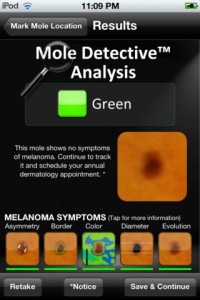 Like stress, back pain is an incredibly common ailment today. Companies like Lumo Body Tech have been designing wearable devices worn around the waist or clipped on to shirt lapels to help users become more aware of their posture. The devices connect to a companion app on the wearer’s smartphone and keeps track of when the user slouches or hunches, and vibrates their phone to nudge them to straighten up. Zephyr Technologies, which was recently acquired by Covidien, also offers a posture sensor on its more advanced BioHarness device.
Like stress, back pain is an incredibly common ailment today. Companies like Lumo Body Tech have been designing wearable devices worn around the waist or clipped on to shirt lapels to help users become more aware of their posture. The devices connect to a companion app on the wearer’s smartphone and keeps track of when the user slouches or hunches, and vibrates their phone to nudge them to straighten up. Zephyr Technologies, which was recently acquired by Covidien, also offers a posture sensor on its more advanced BioHarness device.
Skin health
No type of health-related app has been pilloried in the press more often than mole check apps, which aim to help users keep tabs on whether their skin lesions are changing by saving images of them for comparison to images in the future. Some of the earlier versions of mole check apps got into trouble for over-selling their screening abilities for skin cancer, but similar efforts are still being developed and are mostly still in the research phases currently. Tracking has long been a practice for those at risk of skin cancer to do self-checks for moles and other lesions by marking the locations of these spots on a paper-based body map. The digitized version of these maps can include images of the moles as they looked at each body check – and that information can help dermatologists with diagnoses or preventive care.
Oral hygiene
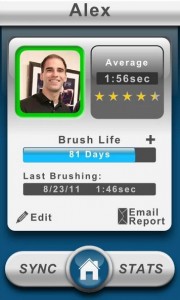 There are a growing number of connected toothbrushes available today that transmit brushing frequency and other metrics to an app on the user’s smartphone. Many of these are intended to help parents keep tabs on nonadherent children who are just beginning to brush on their own. The Beam Brush was the first smartphone-enabled toothbrush to get FDA clearance back in 2012, but since then there have been others, including Oral-B's, which included a partnership with Disney.
There are a growing number of connected toothbrushes available today that transmit brushing frequency and other metrics to an app on the user’s smartphone. Many of these are intended to help parents keep tabs on nonadherent children who are just beginning to brush on their own. The Beam Brush was the first smartphone-enabled toothbrush to get FDA clearance back in 2012, but since then there have been others, including Oral-B's, which included a partnership with Disney.
Cognition
Online programs or mobile apps that offer “brain training” programs and cognition tests, like those offered by Lumosity, have for many years been a favorite tracking tool among many dedicated self quantifiers who use a morning test to determine whether cognition is trending up or down perhaps in part to another change to their routine. For example: Does eating copious amounts of butter make you smarter? These daily cognition tests can also be used by older people who want to keep their minds sharp – a baseline test each morning could be a motivator to start a program to improve memory, for example. Cognitive tests like these could also be helpful to patients and caretakers of people at-risk for developing Alzheimer's.















